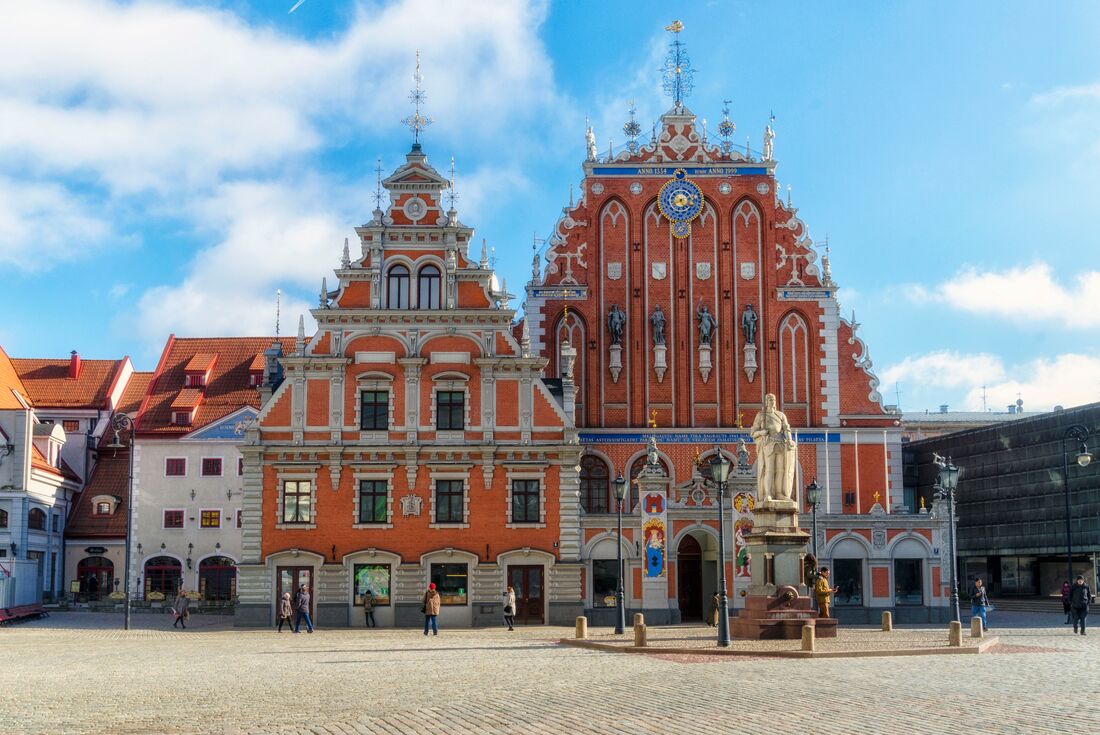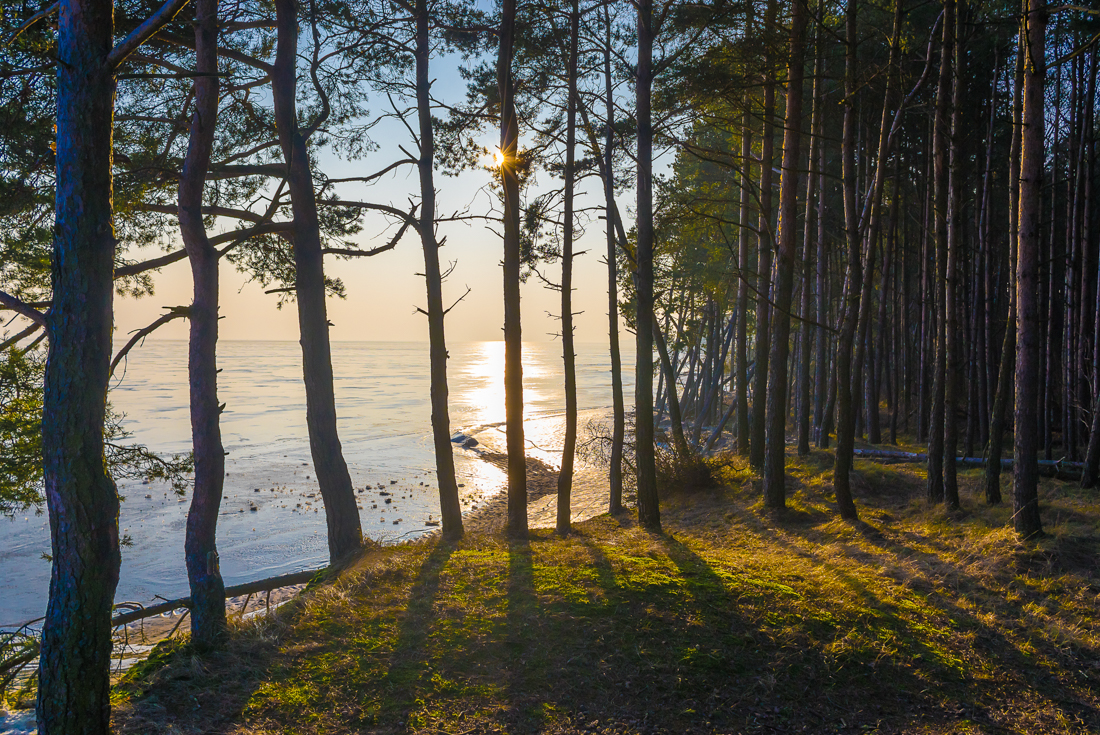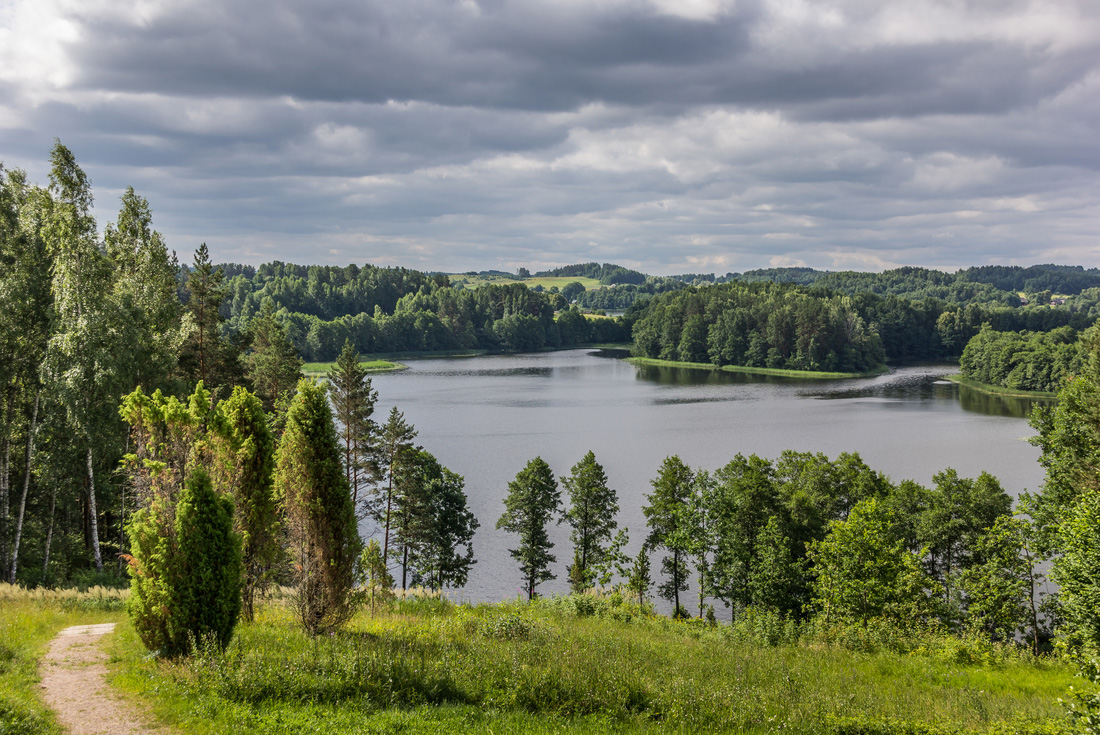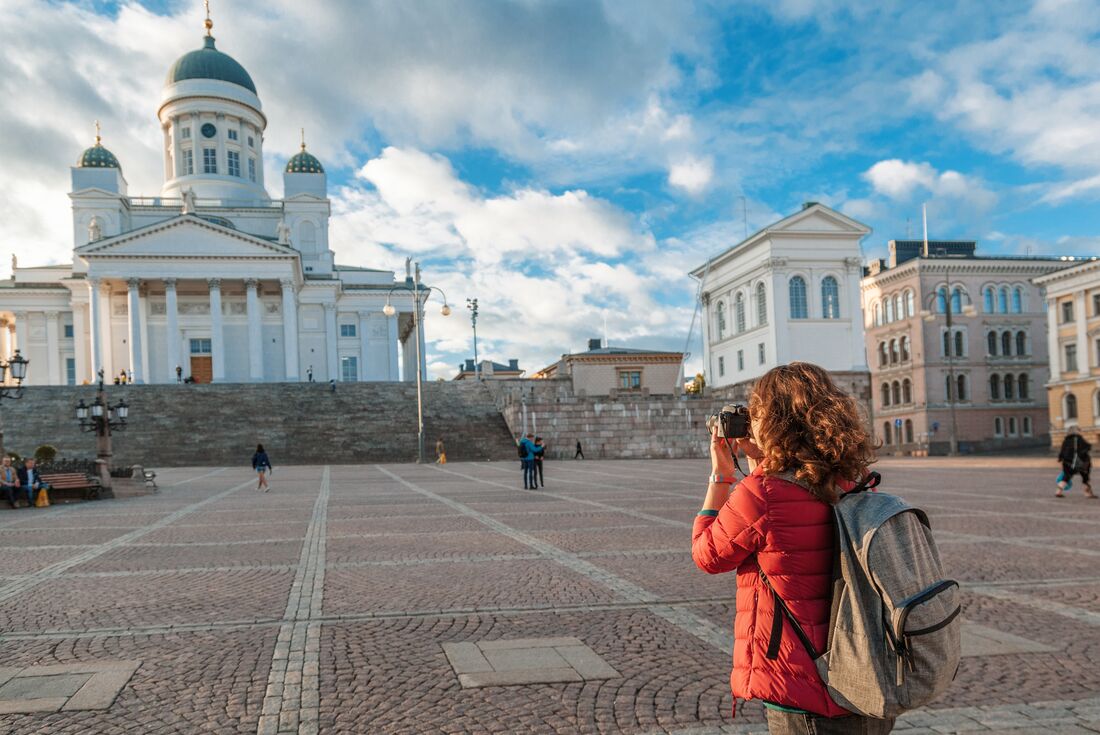Tour details
Collapse
| Tour Provider | Intrepid Travel |
| Number of Days | 12 |
| Price From | $4,190 |
| Start Location | Helsinki, Finland |
| End Location | Vilnius, Lithuania |
| Age Range | Avg. 30+ |
| Group Size | 1 to 14 |
| Tour Style | Standard |
| Tour Themes | Adventure |
| Physical Rating | Easy to Moderate |
 |
|
Itinerary
Expand all
Day 1: Helsinki
Tervetuloa! Welcome to Finland. Your adventure kicks off in Helsinki with a welcome meeting at 6 pm tonight. If you arrive early, maybe check out the Suomenlinna Sea Fortress, Senate Square or catch a performance at the National Theatre. You may want to consider purchasing the Helsinki Card – which is both an economical way to travel on Helsinki City Transport (HKL) services and free admission to the main Helsinki sights and nearly 50 museums. After your meeting, maybe head out for an optional welcome dinner with your group to get to know your fellow travellers.
Day 2: Tallinn
Leave Helsinki after breakfast and catch a ferry across the Gulf of Finland to the Estonian capital of Tallinn. Arrive mid-afternoon, check into your hotel and head out for a short orientation walk through the city. The rest of your day is then free to enjoy this beautifully preserved medieval city and all it has to offer. Maybe head out and enjoy some of the region's culinary specialties or stop for a drink and people watch on the main square. With its steep red roofs, spires, pastel-coloured buildings and new restaurants and bars, Estonia's capital is a real treat to explore. Tonight, maybe find a local restaurant for dinner – your local leader will have the best recommendations!
Day 3: Tallinn
Today is free for you to explore at your own pace. Maybe explore the Old Town – home to the last remaining gothic town hall in northern Europe, Old Thomas. You could also see the Raapteek, which has housed a pharmacy since the 15th century, and St Olaf Church. Maybe head to Upper Tallinn, home to the noble families, to see amazing views of Lower Tallinn and the medieval spires of the town’s walls. The 13th-century Toompea Castle, where the Estonian Parliament sits, and the 19th-century orthodox Alexander Nevsky Cathedral are some of the main attractions. Alternatively, head to Pirita to chill out at Tallinn's most popular beach, or visit Kadriorg Palace, built by czar Peter the Great for his second wife Catherine I.
Day 4: Riga
Depart by bus after breakfast, cross the border and arrive in the Latvian capital of Riga in the afternoon. Riga is renowned for its welcoming locals and a fascinating art nouveau heritage. The afternoon is free for you to explore at your own pace. Maybe discover a vast collection of Latvian art spanning various periods at the Latvian National Museum of Art or catch a performance at the Latvian National Opera and Ballet. Tonight, perhaps grab a drink at one of the many bars in the Old Town.
Day 5: Riga
Travel by public transport to Sigulda – a pretty town with medieval history that backs onto Gauja National Park. Take the cable car across the river to Turaida Castle, which began construction in 1214 and is made from striking red bricks. After, join a guided tour and explore the castle grounds which feature sculptures set in evergreen woodland. This afternoon, lace up your boots and set off on a hike along the winding Gauja River with your leader, taking in the clear air and thick Latvian forest. This evening is then free for you to explore at your own pace – maybe join your group for dinner at a local restaurant.
Day 6: Riga
Spend today exploring Riga. This morning, set out on an orientation tour, where you’ll see the Doma Cathedral, St Peter's Basilica, House of Blackheads, the Swedish Gate, The Great Guild and Small Guild and the Cat House. There is nothing scheduled for the rest of the day, so you’re free to explore at your own pace. Maybe visit The Museum of Occupation of Latvia, which offers insight into the hardships suffered, during occupation by the Germans and Soviets. Or, wander through the Central Market Halls – a great place to haggle for supplies for a picnic lunch. Make sure you give the (bitter but reputedly healthy) Riga Black Balsam a try. The recipe is secret, but it contains rare ingredients such as valerian, wormwood, black pepper, ginger, gentian and linden flower.
Day 7: Klaipeda
Set off by private bus and cross the border into Lithuania. Today is a bit of a long travel day, so it's a good idea to get stuck into your book or favourite podcast. After a stop at the iconic Hill of Crosses at Siauliai, continue onto the former Prussian city of Klaipeda – the city of sculptures and jazz. Klaipeda used to be a member of the Hanseatic League and is the gateway to the Curonian Spit – a long and narrow sand dune peninsula separating the Curonian Lagoon from the Baltic Sea. When you arrive, check into your hotel, then head out to the waterfront and explore the Old Town centre, which features 18th-century wooden buildings and other historic monuments.
Day 8: Curonian Spit
Today, set off on a daytrip to explore the unique UNESCO World Heritage-listed Curonian Spit National Park – the second-oldest national park in the former Soviet Union. This area is full of beaches, sand dunes and forested areas. The peninsula formed only 5000 years ago by strong winds and currents, which constantly change the shape of the landscape to this day (recently, a whole village was swallowed by the sand!). According to legend, the spit was formed by the girl giant Neringa, who poured sand into the Baltic Sea to protect the bay from storms and create an embankment for fishermen. Explore the tiny village of Nida and the surrounding beaches and look in the distance to see the Russian border. Then for lunch, maybe try the smoked pike for which the spit is famous. The rest of the day is free for you to explore the national park – your leader will have the best recommendations if you’re looking for something to do!
Day 9: Aukstaitija National Park
After breakfast, travel by bus, train and car to the town of Ignalina. Then, continue your journey to Aukstaitija (pronounced owk-sty-chee-ah) National Park and the village of Ginuciai – your home for the night. When you arrive, spend the day exploring the national park, said to be one of the best in the Baltic States. With 126 lakes, an abundance of waterways, hills and woods, there is plenty to explore! Tonight, meet your host family and get to know them over a home-cooked dinner – you'll spend the next two days with them.
Day 10: Aukstaitija National Park
This morning, you’ll take a guided kayak ride through the lakes and rivers, past villages and through forests, to an ancient pagan site on top of a hill with a wishing tree. The top affords great views across the surrounding forests and lakes. The rest of the day is free to visit some of the local attractions, such as the nearby villages that date from the 14th century and consist of traditional wooden houses and farmsteads. The 19th-century Ginuciai Watermill is another point of interest. You can hike to lookouts, fish, swim in the lake or river rapids, or relax. Maybe ask your host family to fire up the sauna for the ultimate relaxation and cleansing experience.
Day 11: Vilnius
Continue your journey today by local train to the capital of Lithuania, Vilnius. Having once been occupied by Sweden, Poland, France and Russia, each occupier has left its mark. Take an orientation walk with your leader when you arrive, seeing Cathedral Square and its free-standing belfry and the length of pedestrianised Pilies Gatve, lined by baroque churches. The rest of the day is free. Maybe visit the Museum of Occupations and Freedom Fights, better known as the KGB Museum, as it’s in the former KGB headquarters. If you’d like a break from historic monuments, maybe take a walk through some of the gardens around the city. Tonight, maybe head out for dinner with your group to celebrate the last night of your trip.
Day 12: Vilnius
Your adventure comes to an end today. There are no more activities planned and you're free to depart the accommodation at any time after you check-out. If you’d like to extend your stay to explore Vilnius in more depth, just speak to your booking agent ahead of time.
Inclusions
Expand
Meals: 11 breakfasts, 1 lunch, 2 dinners.
Transport: Public bus, Ferry, Canoe, Private vehicle, Train, Tram, Cable car.
Accommodation: Hotel (9 nights), Homestay (2 nights).
Tallinn - Leader led orientation walk.
Sigulda - Gauja River Cable Car.
Sigulda - Day Trip.
Sigulda - Turaida Castle Guided Tour.
Riga - Leader led orientation walk.
Siauliai - Hill of Crosses.
Curonian Spit - Full Day Trip to the National Park.
Curonian Spit - Dead Dunes visit.
Aukstaitija National Park - Guided Kayak Trip.
Transport: Public bus, Ferry, Canoe, Private vehicle, Train, Tram, Cable car.
Accommodation: Hotel (9 nights), Homestay (2 nights).
Tallinn - Leader led orientation walk.
Sigulda - Gauja River Cable Car.
Sigulda - Day Trip.
Sigulda - Turaida Castle Guided Tour.
Riga - Leader led orientation walk.
Siauliai - Hill of Crosses.
Curonian Spit - Full Day Trip to the National Park.
Curonian Spit - Dead Dunes visit.
Aukstaitija National Park - Guided Kayak Trip.
Departure dates
Expand
| Start | End | Availability | Price AUD |
|---|---|---|---|
| 04 Apr 2026 | 15 Apr 2026 | 4 | $4,660 |
| 18 Apr 2026 | 29 Apr 2026 | 6 | $4,330 |
| 02 May 2026 | 13 May 2026 | 11 | $4,260 |
| 09 May 2026 | 20 May 2026 | 14 | $4,260 |
| 13 May 2026 | 24 May 2026 | 13 | $4,260 |
| 16 May 2026 | 27 May 2026 | 1 | $4,960 |
| 23 May 2026 | 03 Jun 2026 | 1 | $4,960 |
| 27 May 2026 | 07 Jun 2026 | 12 | $4,260 |
| 30 May 2026 | 10 Jun 2026 | 10 | $4,260 |
| 03 Jun 2026 | 14 Jun 2026 | 8 | $4,390 |
| 10 Jun 2026 | 21 Jun 2026 | 11 | $4,390 |
| 13 Jun 2026 | 24 Jun 2026 | 7 | $4,410 |
| 20 Jun 2026 | 01 Jul 2026 | 4 | $4,490 |
| 27 Jun 2026 | 08 Jul 2026 | 13 | $4,190 |
| 01 Jul 2026 | 12 Jul 2026 | 14 | $4,490 |
| 04 Jul 2026 | 15 Jul 2026 | 9 | $4,560 |
| 08 Jul 2026 | 19 Jul 2026 | 9 | $4,560 |
| 15 Jul 2026 | 26 Jul 2026 | 11 | $4,490 |
| 18 Jul 2026 | 29 Jul 2026 | 13 | $4,490 |
| 22 Jul 2026 | 02 Aug 2026 | 3 | $5,090 |
| 25 Jul 2026 | 05 Aug 2026 | 12 | $4,490 |
| 29 Jul 2026 | 09 Aug 2026 | 9 | $4,560 |
| 01 Aug 2026 | 12 Aug 2026 | 7 | $4,560 |
| 05 Aug 2026 | 16 Aug 2026 | 11 | $4,490 |
| 08 Aug 2026 | 19 Aug 2026 | 14 | $4,590 |
| 12 Aug 2026 | 23 Aug 2026 | 14 | $4,590 |
| 15 Aug 2026 | 26 Aug 2026 | 10 | $4,590 |
| 19 Aug 2026 | 30 Aug 2026 | 14 | $4,590 |
| 26 Aug 2026 | 06 Sep 2026 | 11 | $4,590 |
| 29 Aug 2026 | 09 Sep 2026 | 12 | $4,590 |
| 02 Sep 2026 | 13 Sep 2026 | 11 | $4,590 |
| 05 Sep 2026 | 16 Sep 2026 | 11 | $4,590 |
| 09 Sep 2026 | 20 Sep 2026 | 8 | $4,790 |
| 12 Sep 2026 | 23 Sep 2026 | 14 | $4,590 |
| 16 Sep 2026 | 27 Sep 2026 | 10 | $4,490 |
| 19 Sep 2026 | 30 Sep 2026 | 10 | $4,490 |
| 23 Sep 2026 | 04 Oct 2026 | 14 | $4,390 |
| 26 Sep 2026 | 07 Oct 2026 | 4 | $4,890 |
| 10 Oct 2026 | 21 Oct 2026 | 12 | $4,260 |
| 03 Apr 2027 | 14 Apr 2027 | 14 | $4,405 |
| 17 Apr 2027 | 28 Apr 2027 | 14 | $4,405 |
| 01 May 2027 | 12 May 2027 | 14 | $4,405 |
| 08 May 2027 | 19 May 2027 | 14 | $4,405 |
| 15 May 2027 | 26 May 2027 | 14 | $4,405 |
| 22 May 2027 | 02 Jun 2027 | 14 | $4,405 |
| 26 May 2027 | 06 Jun 2027 | 14 | $4,405 |
| 29 May 2027 | 09 Jun 2027 | 12 | $4,405 |
| 02 Jun 2027 | 13 Jun 2027 | 14 | $4,535 |
| 05 Jun 2027 | 16 Jun 2027 | 14 | $4,535 |
| 09 Jun 2027 | 20 Jun 2027 | 14 | $4,535 |
| 12 Jun 2027 | 23 Jun 2027 | 14 | $4,535 |
| 19 Jun 2027 | 30 Jun 2027 | 14 | $4,535 |
| 26 Jun 2027 | 07 Jul 2027 | 14 | $4,535 |
| 30 Jun 2027 | 11 Jul 2027 | 13 | $4,535 |
| 03 Jul 2027 | 14 Jul 2027 | 14 | $4,535 |
| 07 Jul 2027 | 18 Jul 2027 | 14 | $4,535 |
| 17 Jul 2027 | 28 Jul 2027 | 14 | $4,665 |
| 21 Jul 2027 | 01 Aug 2027 | 14 | $4,665 |
| 28 Jul 2027 | 08 Aug 2027 | 14 | $4,665 |
| 31 Jul 2027 | 11 Aug 2027 | 14 | $4,665 |
| 04 Aug 2027 | 15 Aug 2027 | 14 | $4,665 |
| 07 Aug 2027 | 18 Aug 2027 | 14 | $4,665 |
| 11 Aug 2027 | 22 Aug 2027 | 14 | $4,755 |
| 14 Aug 2027 | 25 Aug 2027 | 14 | $4,755 |
| 18 Aug 2027 | 29 Aug 2027 | 14 | $4,755 |
| 25 Aug 2027 | 05 Sep 2027 | 14 | $4,755 |
| 28 Aug 2027 | 08 Sep 2027 | 14 | $4,755 |
| 01 Sep 2027 | 12 Sep 2027 | 14 | $4,755 |
| 04 Sep 2027 | 15 Sep 2027 | 14 | $4,755 |
| 08 Sep 2027 | 19 Sep 2027 | 14 | $4,755 |
| 11 Sep 2027 | 22 Sep 2027 | 14 | $4,755 |
| 15 Sep 2027 | 26 Sep 2027 | 14 | $4,665 |
| 25 Sep 2027 | 06 Oct 2027 | 14 | $4,405 |
| 09 Oct 2027 | 20 Oct 2027 | 14 | $4,405 |











